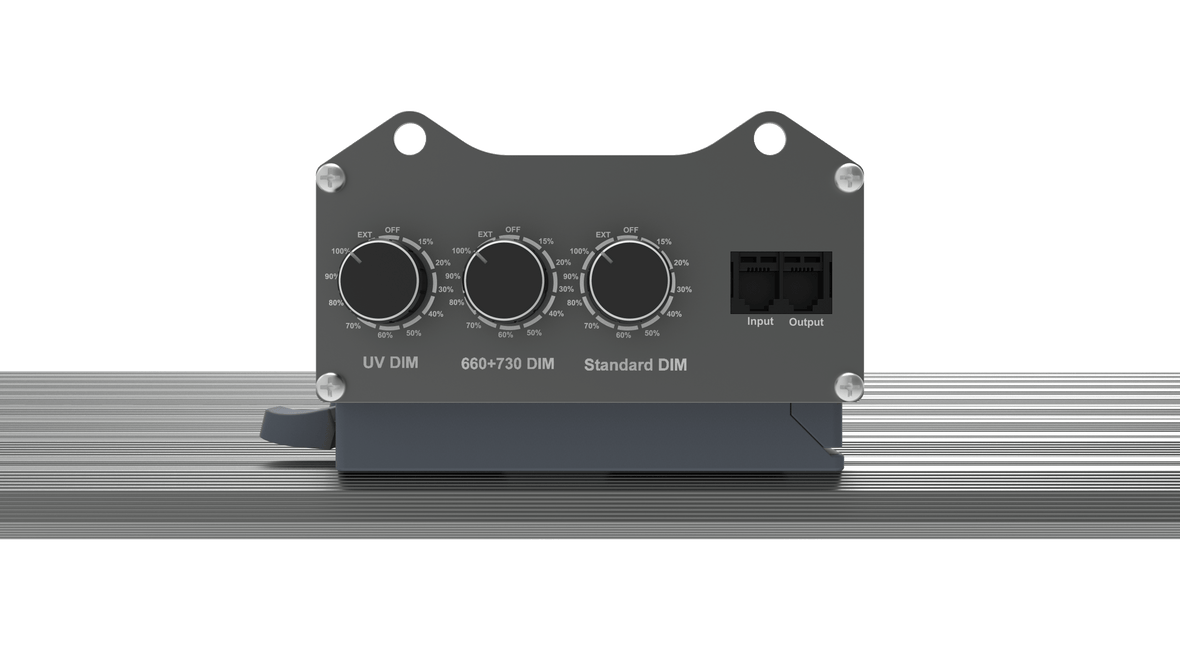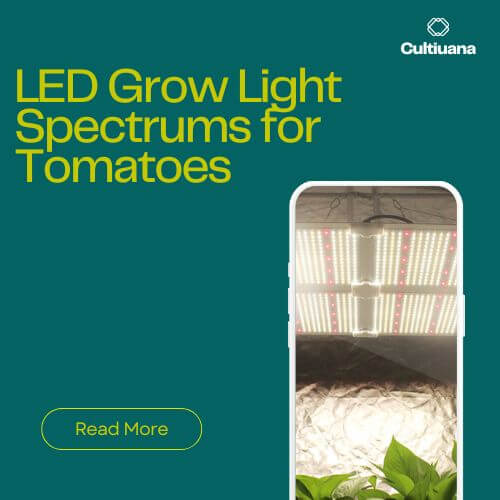
Adjustable Spectrum LED Grow Lights For Indoor Plants

An indoor gardener's approach to designing their greenhouse or growing area can be completely changed by gaining an awareness of the light spectrum.
Light/wavelength is one of the plant’s crucial factors in influencing the physiology, health, development, and yield/production of a crop.
Photosynthesis is governed by natural light, which also initiates several functions in the plant.
This manual delves deeper into the adjustable full spectrum grow light, spectrum control, variable spectrum LEDs, and how each affects plant development since it may have an impact on a greenhouse environment.

Adjustable spectrum LED grow lights and other new technologies like 3 channels adjustable spectrum are also discussed below to be aware of the use of advanced technologies.
LED Grow Light Spectrum and Natural Grow Light Spectrum

The electromagnetic waves of sunlight/artificial light that is light generated encouraging plant development are referred to as the "grow light spectrum."
Plants require light with wavelengths between 400 and 700 nm known as Photosynthetic active radiation or PAR required for functioning and photosynthesis.
Plants can distinguish a wide range of different wavelength that includes the following:
- Ultraviolet light radiation (wavelength=260–380 nm)
- Visible spectrum (wavelength=380–740 nm) which also includes PAR (wavelength=400–700 nm)
- Far-red light radiation (wavelength=700–850 nm)
Many tech industries invested in adjustable full spectrum grow light and make many beneficial products like adjustable spectrum LED grow lights or 3 channels adjustable spectrum.
So you can choose any product (variable spectrum LEDs) which suits your system.
How Different Wavelength/Color Effect the Growth of Indoor Plants?

The light we see has dual nature, which means it is has both the wave and particle nature. The wave nature represents its reflecting property, whereas the particle nature means energy packets which plants absorb and show response in the form of growth.
The wavelength of the light is the distance (representing length) between consecutive crest and trough. Crest and trough are the rise and fall of wavelength, similar like the rise and fall you see water waves.
The whole light makes a spectrum (chart) which represent different visible and non-visible region present in light.
If plants are exposed to different color light they show a slight difference in their growth pattern and we can get benefit through it by exposing them to our choice of wavelength light which results in our desired growth and development of the plants.
Following are the lights (wavelength) and their impacts on the plant:
Red Light (wavelength=625-740nm)
According to a paper, plants' blooming is mediated by the pigment phytochrome through a photoperiodic response on flowering. Thus, the red color aids in plant development and reach its blooming stage. Red light alone can cause plants to elongate, growth stretched, and work on thin leaves.
It works wonders to improve both foliage and blooming when paired with blue, often in the 5:1 range. It is noted that the red color wavelength encourages the growth of small seedlings or new seed germination.
Although, red light is not directly involved in photosynthesis, but in combination with blue and other lights it has a great impact on the photosynthesis rate.
Products like adjustable spectrum LED grow lights have the option of adjustable full spectrum grow light at the same time.
Blue Light (wavelength=440-500 nm)
The actual light color that aid in photosynthesis is blue; plants absorb it through chlorophyll due to their high absorption rates. Chlorophyll contributes to the generation of food and energy for the plant in this way through photosynthesis.
According to research, blue light controls the opening of stomata, the microscopic holes on the leaf surface that govern both losses of water and intake of carbon dioxide.
This light is essential for healthy plant development and plays a significant role in determining plant quality. When combined with other colors, this light guarantees the development of plant roots and results in appropriately controlled optimum growth.
There are variable spectrum LEDs that allow the system to set up 3 channels adjustable spectrums or other desired spectrum control in your production units.
UV-Ultraviolet Light
The UV light wavelength is considered the least useful/ effective. However, it is the wavelength that harms plant development the most. UV rays have a tremendous intensity and can quickly cause burning in the plant parts. Whereas, occasionally UV can benefit some plants, particularly cannabis growth.
To defend itself against shorter-wavelength irradiation, and abiotic stress; it activates the stress response mechanism of plants. UV or Ultraviolet light is consisting of 3 spectrums UVA, UVB, and UVC.
If you set up a system with adjustable spectrum LED grow lights it will allow you to set up an adjustable full spectrum grow light and protect plants from hazardous losses of excess usage of light through spectrum control.
1- UVA or near-ultraviolet light (wavelength=315-400 nm)
UVA is the longest among all UV radiation, in addition to this, it also enhances plant color, thickening of leaves, and maybe even aids in the control of populations of insects.
Light is utilized to control the long-term structure and health of plants at this wavelength when chlorophyll absorption begins.
2- UVB or ultraviolet light (wavelength=280-315 nm)
A little research is done on UVB, and according to studies its impact on foliage and plant is negative.
3- UVC ultraviolet light (wavelength=280 nm)
UVC light is used to control the growth of various plant components, including the height of plants and branches, as well as to minimize the formation of mold or bacteria provided it is applied appropriately procedure and at the appropriate level/amounts. If it is absorbed in excessive amounts then it shows toxicity and harms the plant.
4- IR rays Infrared (wavelength=780nm-1000nm)
Crops require warmth for the development and maturation of their roots, which infrared radiation creates. Fruits mature more uniformly when exposed to infrared light.
This light's intensity can have an impact on how quickly plant stems develop. Short infrared exposure lengthens the distance between nodes. However, excessive infrared exposure can harm plants. Since infrared light has a high heat output.
Plants that haven't recently received water are more susceptible to color loss or death from heat. Additionally, too much infrared may have additional negative effects on plants, like stimulating them to blossom too early while depleting them of nutrients and living matter, or having them experience premature development that compromises their health.
Adjustable Spectrum LED Grow Lights; An innovative plant product representing the future.
An innovative invention adjustable spectrum LED grow lights along with Auto-Timer imitate the sun's spectrum to promote plant growth by a single guidance/setup.
All stages of a plant's life cycle, from seedling growth and vegetative development to bloom and fruiting stages, are covered by this adjustable spectrum LED grow lights.
This spectrum control includes different color options which help plant growth, you can select one or all according to the plant’s needs.
After setting the light color you have to select the intensity and the time required by your plants. A complete guide and usage are intact with the product, it is very easy to use and comparatively affordable as compared to its benefits.
Conclusion:
Lack of light in an area is not a problem now you can grow intensive, high-value crops by the use of artificial light. It might be difficult to select the ideal grow spectrum for the greenhouse.
Due to poor marketing or lack of competence in light and plant research, many LED grow spectrum light vendors provide contradictory information on products.
However, with proper and accurate guidance you can grow healthy and lavishing crops under one roof. You can install new technologies like adjustable spectrum LED grow lights in the system to upgrade it to adjustable full spectrum grow light, variable spectrum LEDs, spectrum control, or 3 channels adjustable spectrum.
The above guide will help you in selecting the perfect light for your production systems.





